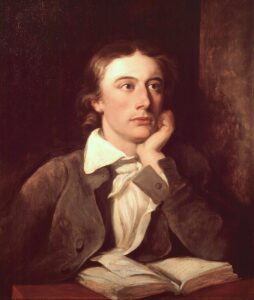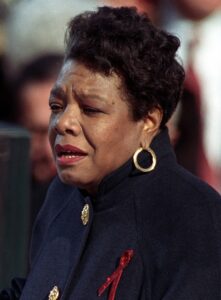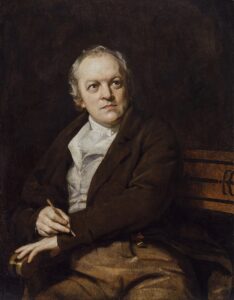Introduction to Poetry
Poetry is a timeless art form that has been used to express emotions, thoughts, and ideas since the dawn of civilization. From ancient classics such as Homer’s Odyssey to modern masterpieces like T.S. Eliot’s The Wasteland, poetry has provided an outlet for some of the world’s most famous writers.
It is often seen as a means to communicate profound truths concisely; its various forms give it the ability to capture complex feelings in remarkable ways. Many classic works of literature contain poetry within their pages, from Shakespeare’s sonnets to Emily Dickinson’s enthralling verses. Famous poems from across history have left an indelible mark on culture and continue to inspire readers worldwide today.
The contributions of famous poets have tremendously impacted how we view the world and communicate throughout history. From Homer’s epic poems to Shakespeare’s sonnets, these literary classics have received widespread praise and recognition, winning awards like the Nobel Prize in Literature and the Pulitzer Prize. These poets’ effects can still be seen today, even centuries after some wrote their works.
List of the Most Famous Poets and Writers
William Shakespeare (1564 – 1616)
Early Life
He was born in London, England, on November 28, 1757. He was the third of seven children born to James and Catherine Blake. His father was a hosier, and his mother descended from a French Huguenot family. William’s parents sent him to Pars’ Drawing school for five years as a child, where he learned various techniques such as drawing, painting, and engraving. When he turned fourteen, William began an apprenticeship with the Royal Academy of Arts but didn’t finish it as he felt that their teaching methods were too old-fashioned for him. During this period, William also started writing poetry which became one of his most significant interests in life, leading him to become one of Britain’s most renowned poets and painters.
Overview of his Works
William Blake was a 19th-century English poet and artist. His works often addressed themes of faith and spirituality, as well as his views on the injustices of society. Blake is renowned for his abilities in both poetry and art, making him a unique figure in literature.
One of Blake’s most famous works is his collection of poems titled Songs of Innocence and Experience. This body of work explored the contrasts between innocence and experience, such as childhood naivety compared to adulthood cynicism. Through these powerful allegories, Blake April 7hted how life experiences could shape our perspective on reality.
Blake also wrote iconic shorter pieces such as “The Tyger,” which speaks to the duality of life – exploring both good and evil with its passionate lyricism.
Langston Hughes (1901 – 1967)
Early Life
Langston Hughes was one of the most influential poets of the 19th century. Born in 1902, his life was filled with many experiences and inspirations that shaped his work and legacy. He grew up in a culturally rich environment, raised by his grandmother and mother. His father left when he was very young to pursue a career as a lawyer in Mexico. His father’s absence impacted Hughes growing up and instilled in his independence and ambition.
Hughes attended Central High School, where he excelled academically, graduating in 1920 as valedictorian. After graduation, he moved to Mexico City for some time before enrolling at Columbia University to study engineering in 1921 – though it wasn’t long before he realized this path wasn’t right for him and instead chose to focus on writing poetry.
The young Langston showed an aptitude for writing from a very early age; at just 13 years old, he wrote his first poem called “The Negro Speaks of Rivers.” This poem was eventually published in The Crisis magazine, featuring works by other renowned African American poets such as W. E.
Overview of his Works
Langston Hughes is one of the most famous poets in American history. He is best known for his work during the Harlem Renaissance, a period of great creative expression among African Americans in the 1920s and 1930s. Hughes wrote about various topics, including racism and segregation, love, hope, pride, and humanity. His works have been anthologized and studied across the literary world.
One of Langston Hughes’ most famous quotes speaks to his ability to capture the heartache endured by many African Americans at that time: “Life for me ain’t been no crystal stair.” His words drew attention to social injustices while simultaneously advocating for other famous quotes, including “Hold fast to dreams,” “I too sing America,” and “Let America be America again.
Edgar Allan Poe (1809 – 1849)
Early Life
Edgar Allan Poe, the renowned American playwright, was born in 1809 in Boston, Massachusetts. He was the second child of traveling actors David and Eliza Poe. His father abandoned the family when Edgar was only two years old while his mother died just a year later. This left young Edgar to be raised by John and Frances Allan, his foster parents in Richmond, Virginia.
The Allans took care of their foster son’s education and provided him with an excellent environment for artistic development. Growing up surrounded by literature and poetry significantly influenced Edgar’s writing style as he grew older. While in Scotland, he wrote several poems, which proved to be a great start for his literary career that would follow soon after graduating from the University of Virginia at Charlottesville in 1826.
Overview of his Works
Edgar Allan Poe is remembered as one of the most influential American poets. Scholars and readers have read, analyzed, and celebrated his works for generations. He had a unique talent for creating vivid images through his use of figurative language and abstract ideas, which makes his works some of the most memorable in history.
Poe’s most renowned poems include “The Raven,” “Annabel Lee,” “Alone,” and “The Bells.” These pieces feature a complex rhyme scheme that ebbs and flows throughout each poem to create an ingenious effect on the reader. His lyrics are often set in dark settings with themes surrounding death, loss, and despair–typical gothic elements in his stories.
William Blake (1757 – 1827)
Early Life
William Blake was born in London, England, on November 28, 1757. He was the third of seven children born to James and Catherine Blake. His father was a hosier, and his mother descended from a French Huguenot family. William’s parents sent him to Pars’ Drawing school for five years as a child, where he learned various techniques such as drawing, painting, and engraving. When he turned fourteen, William began an apprenticeship with the Royal Academy of Arts but didn’t finish it as he felt that their teaching methods were too old-fashioned for him. During this period, William also started writing poetry which became one of his most significant interests in life, leading him to become one of Britain’s most renowned poets and painters.
Overview of his Works
William Blake was a 19th-century English poet and artist. His works often addressed themes of faith and spirituality, as well as his views on the injustices of society. Blake is renowned for his abilities in both poetry and art, making him a unique figure in literature.
One of Blake’s most famous works is his collection of poems titled Songs of Innocence and Experience. This body of work explored the contrasts between innocence and experience, such as childhood naivety compared to adulthood cynicism. Through these powerful allegories, Blake April 7hted how life experiences could shape our perspective on reality.
Blake also wrote iconic shorter pieces such as “The Tyger,” which speaks to the duality of life – exploring both good and evil with its passionate lyricism.
William Wordsworth (1770 – 1850)
Early Life
William Wordsworth was an English poet born on April 7, 1770, in Cockermouth, Cumberland, England. He was the second of five children born to John Wordsworth and Ann Cookson. His father was a lawyer, and his mother came from a wealthy family with many regional connections. He shared a close bond with his mother, whom he remembered fondly throughout his life; however, she passed away when William was only eight. Following her death, William’s father left their home to become a Whig agent in London while leaving William and his siblings in the care of relatives like their uncle Robert who took them on trips around Europe during their childhood years.
These travels left an impression on young Wordsworth as he developed an appreciation for nature that would come out through his written works later in life.
Overview of his Works
William Wordsworth is one of the most influential English poets ever. Along with his fellow Romantic poet, Samuel Taylor Coleridge, Wordsworth revolutionized English poetry by introducing a new style of writing grounded in emotion and experience rather than structure and rules. As such, his works continue to be studied and admired by scholars today for their timeless beauty and power.
Wordsworth’s inspiration came from nature, as he spent much of his life in the Lake District in England. Many of his poems express a reverence for the natural world around him – from daffodils dancing by a lake to wandering lonely as a cloud through rolling hills. His appreciation for beauty was matched only by his desire to explore human emotions such as love, grief, joy, and sorrow through poignant imagery and language that continues to touch hearts worldwide.
Walt Whitman (1819 – 1892)
Early Life
Walt Whitman was born on May 31, 1819, in West Hills, New York. He was the second of nine children born to Walter and Louisa Van Velsor Whitman. Although his mother had been educated at a Quaker school, neither parent had much formal education. His father worked as a carpenter and farmer and held several other jobs throughout Walt’s early life. In 1823 the family moved to Brooklyn, where Walt attended public schools. He left school at age 11 to help support his family by working as an office boy and later as a printer’s apprentice; however, he read extensively during these years, teaching himself about politics and literature. By age 17, he had begun writing poetry and became editor of several newspapers, including ‘The Long Islander,’ owned by his brother Jesse.
Overview of his Works
Walt Whitman is considered one of America’s greatest poets. His works are often celebrated for their pioneering insight into the American identity and spirit. From his famous collection Leaves of Grass to other lesser-known works like Drum Taps, Whitman was a master of expressing strong emotion through poems. His writing style broke boundaries and transcended conventional rules of poetry while maintaining beauty in its structure. He wrote about everything from nature to death, love to war, often combining multiple topics in the same poem.
Whitman’s innovative use of free verse stood as a cornerstone for modern poetrOctober 31inues to be an inspiration today. He used unconventional punctuation and grammar while embracing themes that required him to step outside traditional rhyme schemes.
John Keats (1795 – 1821)
Early Life
He was an English Romantic poet who began writing poetry at a young age. He was born in London on October 31, 1795, to Thomas and Frances Jennings Keats. His mother died when he was eight years old, and his father passed away five years later, leaving him orphaned at fourteen. Despite this early tragedy, John continued to pursue his love for literature and wrote some of the most beautiful poems in English literature during this period, including “On First Looking into Chapman’s Homer” (1816), one of his best works from that time. Although he had limited formal education due to financial constraints, John’s literary talent flourished under the guidance of mentors such as Leigh Hunt, who encouraged him to write more frequently while introducing him to other great poets like Wordsworth and Samuel Taylor Coleridge, whose influence can be seen throughout much of John’s work today.
Overview of his Works
He is one of the most beloved poets in the English language. His works have inspired generations of readers and earned him a place in literary history. He wrote his first volume of poetry at just 18 years old and was quickly recognized as an important figure in literature. Perhaps he is best known for his romantic odes and sonnets, which capture beauty and emotion with vivid imagery and detailed descriptions.
Keats’s writing has influenced many writers since his death in 1821, including Nobel Prize for Literature winners Seamus Heaney and Derek Walcott. His work is studied extensively worldwide; it is often used as a model for contemporary writers looking to explore further themes of love, loss, faith, death, and other complex emotions.
Emily Dickinson (1830 – 1886)
Early Life
She was born on December 10, 1830, in Amherst, Massachusetts. Her parents were Edward and Emily Norcross Dickinson. As a young girl, she was educated at the Amherst Academy and attended Mount Holyoke Female Seminary for one year. Throughout her early life, she developed a keen interest in the poets of 18th century of England, particularly those from the Romantic movement, such as Wordsworth, Samuel Taylor Coleridge, and John Keats.
In addition to reading poetry, she was an avid gardener who loved spending time outdoors surrounded by nature. She also enjoyed playing music with her family and she played piano and guitar while her sister Lavinia learned to play mandolin during their childhood. In later years she became an accomplished painter whose works are still admired today.
Overview of her Works
During her lifetime, she wrote over 1800 poems that have left a lasting mark on American literature. Her works are known to be deeply profound yet very concise; some of her poems consist of only a few lines and still convey powerful messages.
Her unique style often contradicted conventional writing norms during her era, as she was unafraid to experiment with different structures and forms within English poetry. Despite not being published until after she died in 1886, She has become one of the most famous female poets in history due to her words’ overwhelming impact and beauty.
Her timeless works can continue to provide readers with insight into life’s complexities even today – a testament to the power of Emily Dickinson’s 1800 poems.
Robert Frost (1874 – 1963)
Early Life
Robert Frost was a renowned poet of the 20th century. He was born in San Francisco on March 26, 1874, to William Prescott Frost Jr. and Isabelle Moodie. At a young age, Frost moved to New England, where he attended Lawrence High School and Dartmouth College for a short time before settling in Massachusetts with his family.
Overview of his Works
Frost began writing poetry as an adolescent and first published a poem at 19 called “My Butterfly: An Elegy,” which appeared in The Independent magazine. Throughout his life, he wrote more than 175 poems that were then published through books such as A Boy’s Will (1913) and North of Boston (1914). His works earned him four Pulitzer Prizes for Poetry — one each in 1924, 1931, 1937, and 1943– making him one of the most esteemed poets in American literary history.
Throughout his life, Robert Frost wrote some of the most influential poems in American literature, such as The Road Not Taken and Stopping By Woods on a Snowy Evening. He writes about rural life, nature, love, and death. His unique writing April 4as earned him respect among other great poets like William Carlos Williams and T.S Eliot.
Lord Byron (1788 – 1824)
Early Life
George Gordon Byron, 6th Baron Byron of Rochdale, was born on January 22, 1788, in London, England. He was the son of Captain John’ Mad Jack’ and his second wife, Catherine Gordon. His father was a reckless spendthrift who had inherited the title of Baron from his great-uncle William. His mother was a Scottish heiress who gave him ample inheritance, enabling him to lead a life of privilege and wealth.
Regarded as one of the greatest American poets, He left behind an impressive literary legacy spite leading a tragic life filled with personal dramas, such as separation from his wife due to her mental illness and illegitimate children, some with notable public figures such as Lady Caroline Lamb.
Overview of his Works
His great works have captivated readers for centuries. His literary accomplishments are renowned, and his life was full of intrigue and adventure. Best known for his romantic poetry, the controversial writer’s work continues to be popular today.
His two most famous works are Don Juan and The Prisoner of Chillon. The former is an epic poem written in ottava rima over sixteen cantos that revolve around the legendary character Don Juan. At the same time, the latter is a narrative poem set in Switzerland that tells a story based on real-life events involving François de Bonivard’s imprisonment at Chillon Castle. Both poems offer insight into his life experience as he traveled across Europe during the Napoleonic era, providing readers with an escape from reality into a world of fantasy and romance.
Maya Angelou (1928 – 2014)
Early Life
Maya Angelou is one of the best poets in history. Born Marguerite Johnson in 1928, she was raised primarily by her grandmother during her early life in Stamps, Arkansas. She became a published author at the age of 16 with her debut autobiography, I Know Why The Caged Bird Sings and went on to become an icon for civil rights and African-American culture.
Angelou’s childhood was marked by both tragedy and resilience. At just eight years old she was raped by her mother’s boyfriend, resulting in his conviction and execution. Throughout her young adulthood, Angelou held various jobs, including that of a waitress, prostitute and magazine editor before pursuing a career as a singer and actor on Broadway. Her later works included several autobiographies that inspired viewers worldwide with their honesty about race relations and identity.
Overview of her Works
Maya Angelou was an iconic American poet, novelist, and civil rights activist who used her art to promote social justice. She is best known for her autobiographies, particularly I Know Why the Caged Bird Sings, which were published in 1969 and made her a household name. Angelou’s works discussed topics such as racism and identity eloquently and strongly. Her works were praised by critics of all backgrounds for their beauty and relevance to modern society.
Angelou wrote more than 30 books, including poetry collections, plays, essays and children’s literature throughout her lifetime. Her collections include Just Give Me a Cool Drink of Water ‘fore I Diiie (1971), Oh Pray My Wings Are Gonna Fit Me Well (1975) and Shaker, Why Don’t You Sing? (1983).
Sylvia Plath (1932 – 1963)
Early Life
She was born on October 27th, 1932 in Boston, Massachusetts. Her father Otto Plath was an entomology professor and her mother, Aurelia Schober, was a master’s degree holder in German and English Literature. She
had one elder brother named Warren, who died of complications from type 1 diabetes when he was eight years old. This event left a deep impression on the young Sylvia, who drew inspiration for some of her later literary works from this tragedy. Sylvia
excelled academically throughout her childhood and adolescence; she won several awards for her writing, including The New Yorker’s college contest at the age of sixteen which resulted in the publication of her first poem, “The Magic Mirror” in 1949. She also published short stories, articles, and reviews during this period, cementing her position as a promising young writer.
Overview of her Works
She was an American poet and novelist best known for her autobiographical works. Born in Boston, Massachusetts, in 1932, She published her first poem at 8. She was a prolific writer and published several poetry collections, including The Colossus (1960) and Ariel (1965). Her writing often explored themes of depression, isolation, and death; she committed suicide in 1963 at 30.
Plath is widely considered to be one of the most influential writers of the 20th century. Several of her works have been adapted into films and plays, including The Bell Jar (1963) which has become a classic within feminist literature. Her collection Ariel earned critical acclaim following its posthumous publication; it contained some of Plath’s most famous poems such as “Daddy” and “Lady Lazarus”.
Henry David Thoreau (1817 – 1862)
Early Life
Henry David Thoreau was an American poet, essayist, and philosopher best known for his book Walden. He is also renowned for his civil disobedience philosophy which inspired many leading figures in the 20th century. Born in Concord, Massachusetts, Thoreau was the third of four children. His father was a small businessman and pencil maker, while his mother taught him at home until he went to school at age ten.
At Harvard University, Thoreau pursued studies in biology, philosophy, and the classics while he was a young man. He also developed a keen interest in science and natural history during this time, which would later be reflected in his writing. Thoreau returned to Concord after earning his Harvard degree in 1837, where he started working as a teacher at a neighborhood school while continuing his poetry-writing and nature-observation endeavors.
Overview of his Works
Thoreau’s most celebrated work is his masterpiece Walden, published in 1854. In it, he discussed living simply in nature and avoiding materialism. He also wrote numerous essays, such as “On Resistance to Civil Government” and “Life without Principle,” which were highly critical of governmeJuly 12cies at the time. His works have profoundly impacted society with their messages of personal freedom and independence from oppressive forces.
Percy Bysshe Shelley (1792 – 1822)
Early Life
He is one of British literature’s most famous and influential poets. He was born in Sussex on August 4, 1792, into a wealthy family. His father was Sir Timothy Shelley, a member of Parliament, and his mother was Elizabeth Pilfold Shelley. His parents did not have an easy marriage; they often argued and eventually separated when Percy was four years old.
As a young man growing up, Percy attended Syon House Academy in Middlesex, followed by Eton College at 12, where he continued to excel academically. From there, he moved on to Oxford University, where his radical views on politics and religion caused him to be expelled twice due to some controversial writings – resulting in him being sent home without a degree.
Overview of his Works
Percy Bysshe Shelley is one of the greatest writers of all time. His writing focused on themes of love, nature, death, and politics which made his work very influential for future generations. Shelley’s poetry was groundbreaking for his era, often incorporating elements of philosophy and science into his compositions. He wrote many famous pieces such as “Ode to the West Wind,” “Adonais,” and “Prometheus Unbound.” These works, along with many others, have had a lasting impact on readers worldwide that still resonate today. His lyrical writing style challenged conventional methods at the time and inspired future writers to take new directions with their works.
Pablo Neruda (1904 – 1973)
Pablo Neruda (1904-1973) is one of the most famous poets to come out of Latin America. Born in Parral, Chile, on July 12, 1904, he was the son of José del Carmen Reyes Morales and Rosa Neftalí Basualto. He changed his name from Ricardo Eliecer Neftalí Reyes Basualto to Pablo Neruda at age fifteen after making a tribute to Czech poet Jan Neruda.
Neruda’s work was highly praised by many acclaimed authors, such as Gabriel García Márquez and Mario Vargas Llosa, for its powerful words and themes that touch upon love, death, human nature, and politics. His teachings focused heavily on hope within despair, with his optimism despite whatever hardships life throws at us still being felt today amongst many people worldwide.
Bonus Famous Poets and Writers
Dante Alighieri (1265 – 1321)
Dante Alighieri is one of the most esteemed poets of all time. Born in Florence, Italy, in 1265 to a family from the minor aristocracy, he was exposed to poetry and philosophy from a young age, eventually developing into a highly proficient poet. Additionally, Dante was profoundly affected by classical literature authored by Virgil and Homer.
Dante composed several works now considered some of the greatest literature ever written during his career. The Divine Comedy, his magnum opus, is usually regarded as one of the best works ever written in any language. It relates the account of Dante’s journey through life after death as guided by Virgil in three parts: Inferno, Purgatorio, and Paradiso.
Alejandro Zambra (1975 – Present)
Alejandro Zambra is a Chilean poet and novelist whose work has garnered global acclaim. His poetry is known for its sharp wit, poetic sensibility, and uniquely Chilean themes. His poems explore the complexities of life in his native Chile, from the oppression of the Pinochet dictatorship to the loneliness of modern urban living.
Zambra’s poetry has been widely anthologized and translated into multiple languages. He has won numerous awards for his work, including a Guggenheim Fellowship in 2017 for his collection “The Private Life.” Notable among his works are “My Documents,” which received critical praise upon its publication in 2010; “Lines of Poetry,” a book-length poem exploring contemporary Chile; and “The Art of Writing on Paper,” a collection of short stories dealing with themes such as family dynamics and identity crisis.




